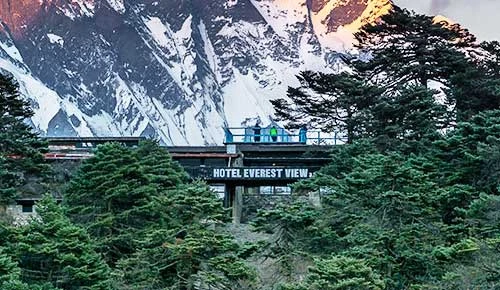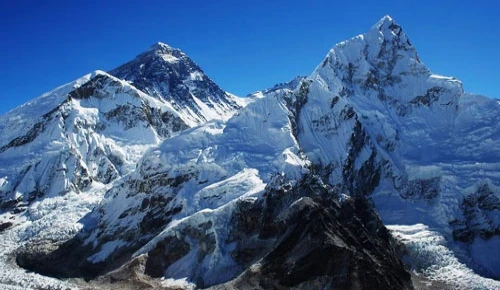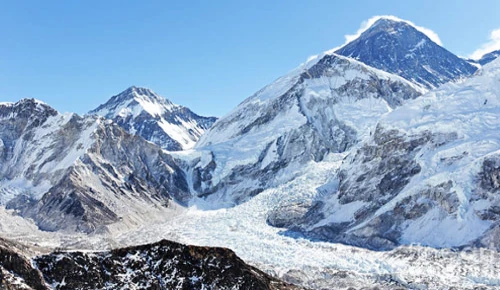Swayambhunath: Exploring Nepal's Sacred Stupa
Swayambhunath is very important to the culture and religion of Nepal. It is not only a holy place for Buddhists but also for Hindus. The past of the stupa is tied to Nepal's spiritual journey, which makes it a symbol of peace between Hinduism and Buddhism.
Through this blog, we set out on a journey to learn more about Swayambhunath Stupa's long past and cultural importance. We'll find out where it came from in the past, what its design means spiritually, and what rituals have made it a popular place for pilgrims to visit. Also, we'll give you a taste of the unique experience that tourists will have when they climb the hill and take in the spiritual atmosphere of Swayambhunath and the breathtaking views from the top.
Book a Kathmandu Valley sightseeing tour if you want to see Swayambhunath and learn about Nepal's culture and history. You will not only get to explore Swayambhunath but also a few of Nepal's religious and cultural places.
Table of Contents
Interesting Facts About Swayambhunath
Facts | Description |
Ancient Origins | Over 2,000 years old, one of Nepal's oldest religious sites |
Sacred Location | Situated on a hill overlooking Kathmandu Valley with stunning views |
Buddhist and Hindu Fusion | Respected by both Buddhism and Hinduism, showcasing religious harmony |
All-Seeing Eyes | The painted eyes on all sides symbolize Buddha's wisdom watching over the world |
Monkey Residents | Known as the "Monkey Temple" due to the lively monkey population |
Prayer Wheels | Pilgrims spin prayer wheels around the base for blessings and positive energy |
Lotus Symbolism | 13-tiered spire represents enlightenment steps; lotus symbolizes purity and awakening |
Earthquake Resilience | Survived earthquakes, demonstrating its spiritual resilience |
UNESCO World Heritage | Designated a UNESCO site in 1979 for cultural and historical significance |
Candlelit Celebrations | Illuminated with candles during Buddha Jayanti for a breathtaking sight |
Pilgrimage and Rituals | Visitors perform rituals, offer prayers, and light butter lamps. |
Art and Architecture | Intricate carvings and statues reflect Nepali and Tibetan artistry. |
Evening Atmosphere | Lit by lights and prayers, creating a serene and magical ambiance at dusk |
Cultural Integration | Interwoven into Nepal's culture, appearing in literature, art, and festivals. |
Spiritual Diversity | Draws seekers and pilgrims worldwide, fostering spiritual exchange. |
Introduction and Historical Background
Swayambhunath Stupa, also known as the "Monkey Temple," is a beautiful old structure on a hill in the center of Kathmandu, Nepal. Its white dome and shining spire make it one of Nepal's most well-known and respected landmarks.
The origins of Swayambhunath, also known as the "Monkey Temple," are hidden in legend. According to local legends, an ancient lotus once thrived in a lake that covered the Kathmandu Valley. This lotus radiated a divine light and represented the site where Adi Buddha was born. According to legend, the stupa emerged spontaneously from this lotus, hence the name "Swayambhunath," which means "self-emerged." This mythological origin highlights the spiritual significance of the site.
Over the centuries, Swayambhunath has endured numerous transformations. Originally, it was likely a simple mound or tiny stupa. As Buddhism became more prominent in Nepal, however, the stupa grew in size and complexity.
The iconic white dome with a gilded pinnacle, representing illumination, was added later. The architecture of the stupa is a unique combination of Nepalese and Tibetan styles, reflecting the cultural diversity of the region.
Various dynasties and monarchs had an impact on the development of Swayambhunath. In the fifth century, the Licchavi dynasty played an essential role in the expansion of the stupa.
Later dynasties, such as the Mallas, proceeded to add details and improve the stupa. Each ruler added prayer wheels, statues, and other ornamental elements to the structure. The stupa also became a center of royal patronage, which contributed to its expansion and influence.
Architecture and Symbolism
The Swyambhunath Stupa is a big dome-shaped monument on a hill in Kathmandu, Nepal. It has a strong base that holds up a white dome with golden spikes on top. Each side of the stupa has a pair of Buddha's eyes that look in all four directions. Above them is a third eye that stands for knowledge. Prayer flags fly around the tower, making it look even more colorful.
The base of the stupa is like the earth, while the dome is like the whole world. The 13 rings that surround the dome reflect the path to enlightenment, which goes from ignorance to nirvana. The peak on top represents the knowledge that frees you from the bonds of the world. The Buddha's eyes watch over the world and give all beings protection, kindness, and wisdom.
The architectural design of the Swyambhunath Stupa is based on Buddhist thoughts. The levels that go up tell us that we should move from lower desires to higher levels of enlightenment. The eyes tell us to be careful on our spiritual path, and the third eye means that wisdom has come to life. The prayer flags spread positive energy and benefits by sending out prayers and mantras into the wind.
The design of the Swyambhunath Stupa is based on deep Buddhist ideas that guide both the physical and spiritual lives of those who come and worship there.
Spiritual Significance of Swyambhunath
Swayambhunath is a famous UNESCO World Heritage Site. This award shows how important it is as a cultural and spiritual symbol, not just in Nepal but around the world.
Swayambhunath is the most important sacred place in Nepal. It is a place where Buddhism and Hinduism get along well, which makes it a symbol of how people of different religions can work together. People from many different places come here to pray for benefits and find spiritual comfort.
At Swayambhunath, visitors and followers take part in many different rites and practices. Many people walk around the stupa while spinning prayer wheels and saying chants. This is a spiritually significant act that shows spiritual growth. Putting out offerings and lighting butter lamps are signs of love and respect for the spiritual meaning of the stupa. People also hold religious ceremonies, put up prayer flags, and meditate at the spot, all of which help people feel more connected to the spiritual energy it gives off.
Tips for travelers: Dos and don'ts while visiting the stupa
Dos:
- Dress modestly, covering shoulders and knees, out of respect for the sacred site.
- Remove your shoes before entering any temple area.
- Join in the act of spinning prayer wheels clockwise as a sign of respect.
- Observe the rituals quietly and maintain a respectful distance from worshippers.
- Take in the stunning view of Kathmandu Valley from the hilltop.
Don'ts:
- Don't climb onto stupas or religious structures for photos; it's considered disrespectful.
- Avoid public displays of affection within the temple complex.
- Refrain from loud conversations or disruptive behavior that could disturb others.
- Don't take photographs of people without their permission, especially during prayer.
- Don't litter; carry a small bag for any trash you generate.
Note: Remember, whether you're a pilgrim seeking spiritual solace or a curious traveler intrigued by Nepal's cultural heritage, treating Swyambhunath with reverence and understanding its significance enriches the experience for both you and those around you.








